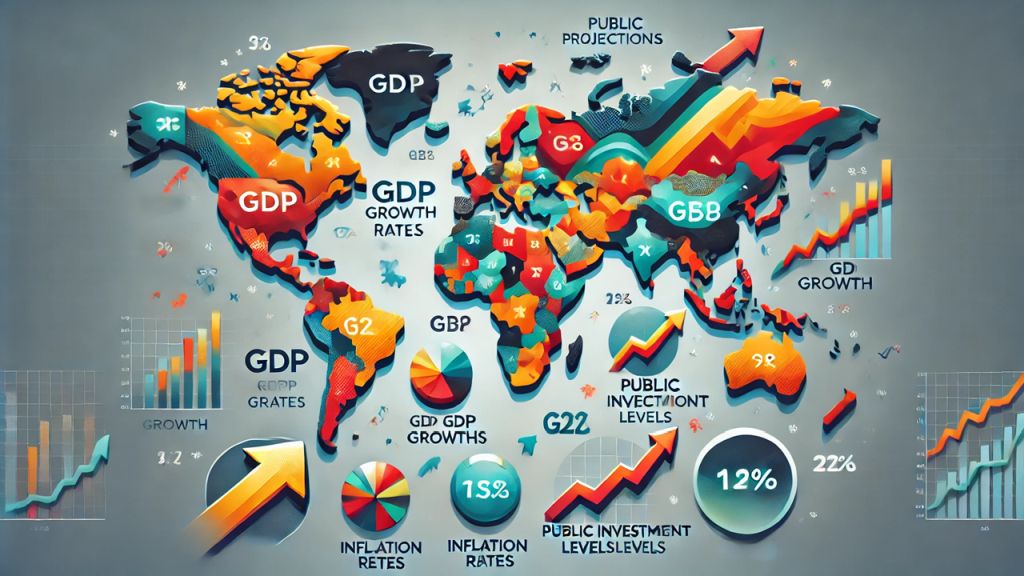One of the most pressing environmental challenges is the reduction of carbon emissions.
As the global climate crisis intensifies, businesses are increasingly under pressure to not only adapt to environmental challenges but also actively contribute to mitigating them. Climate change, pollution, deforestation, and the depletion of natural resources have made sustainability a top priority for many companies across different sectors. However, the journey toward environmental responsibility is not a one-size-fits-all approach. Organizations are adopting a variety of innovative strategies to tackle these challenges while ensuring long-term profitability and positive societal impact.
In this blog post, we will explore how companies from various industries are addressing environmental concerns, from reducing carbon footprints to embracing circular economies. We will also look at the benefits of these strategies and the lessons businesses can learn from one another.
Reducing Carbon Footprints
One of the most pressing environmental challenges is the reduction of carbon emissions. The burning of fossil fuels, industrial processes, and transportation contribute significantly to the rise in global temperatures. In response, many companies are setting ambitious goals to reduce their carbon footprints through a combination of energy efficiency improvements, the adoption of renewable energy sources, and innovative technologies.
Renewable Energy Investments
Many companies are shifting to renewable energy sources to power their operations. Google, for example, has been carbon neutral since 2007 and has committed to running its data centers and offices entirely on renewable energy. They have invested in solar and wind energy projects to help meet their ambitious sustainability goals.
Similarly, Microsoft aims to be carbon negative by 2030, meaning it will remove more carbon from the atmosphere than it emits. The company is employing a mix of carbon capture technologies, reforestation projects, and investments in renewable energy sources to achieve this target.
Energy Efficiency Programs
Aside from switching to renewables, businesses are optimizing energy usage within their facilities. Walmart has committed to cutting its greenhouse gas emissions by 18% by 2025, focusing on energy efficiency in its operations. The company has installed solar panels on its store rooftops and energy-efficient lighting in its distribution centers, cutting down on energy consumption and reducing carbon emissions.
Carbon Offsetting
Many companies that cannot yet achieve net-zero emissions are turning to carbon offsetting programs. For instance, airlines such as Delta and Lufthansa are investing in reforestation initiatives and renewable energy projects to offset the emissions produced by their flights.
Sustainable Product Design and Circular Economy
Another key area where companies are focusing their efforts is sustainable product design. The traditional linear model of “take, make, dispose” is rapidly being replaced by the circular economy, which emphasizes reusing, recycling, and reducing waste.
Designing for Longevity
Apple has focused on making its products more durable and recyclable. The company’s products are increasingly being designed for easy repair and recycling, and Apple has introduced a robot named Daisy that disassembles old iPhones to recover valuable materials. In this way, Apple reduces e-waste and reintroduces valuable resources into its supply chain.
Closed-Loop Systems
Patagonia, the outdoor clothing brand, has long been a leader in promoting environmental responsibility. The company has introduced a repair and reuse program, where customers can bring in old items for repairs or exchanges. They also use recycled materials in their products and are working toward creating a closed-loop system where materials can be continuously reused without being sent to landfills.
Similarly, car manufacturers like Tesla are advancing the circular economy by creating electric vehicles (EVs) that rely on recyclable materials and have longer lifespans. Tesla’s battery recycling efforts further promote sustainability in the electric vehicle sector.

Packaging Innovations
In the consumer goods industry, companies are working on reducing plastic usage and switching to sustainable packaging options. For instance, Unilever, a global leader in consumer goods, has pledged to make all of its plastic packaging reusable, recyclable, or compostable by 2025. The company is also investing in biodegradable and recyclable packaging alternatives, such as paper-based materials and plant-based plastics.
Sustainable Agriculture and Food Production
The food industry is another area where environmental challenges are being addressed. Agriculture is a significant contributor to environmental degradation through deforestation, water usage, and greenhouse gas emissions. However, many companies in the food sector are adopting sustainable farming practices and looking for ways to reduce their environmental impact.
Regenerative Agriculture
Companies like General Mills and Danone are investing in regenerative agricultural practices, which focus on improving soil health, reducing carbon emissions, and increasing biodiversity. Regenerative farming techniques, such as crop rotation, reduced tillage, and cover cropping, can help sequester carbon in the soil and promote healthier ecosystems.
Plant-Based Alternatives
The growing demand for plant-based alternatives to meat is another significant development in the food industry. Companies like Beyond Meat and Impossible Foods are producing plant-based burgers and other products that use fewer resources and produce fewer greenhouse gases than traditional animal farming. This shift toward plant-based diets is seen as a crucial strategy for reducing environmental footprints and addressing issues related to food production.
Reducing Food Waste
Food waste is another major environmental challenge that companies are addressing. According to the UN, roughly one-third of all food produced is wasted. Major players like Kroger and Tesco are working to reduce food waste by implementing better inventory systems, donating unsold food, and improving packaging to extend product shelf life.
Sustainable Supply Chains
A major environmental challenge for companies is the sustainability of their supply chains. Supply chains often involve a wide range of actors across various countries, and businesses must ensure that environmental and ethical standards are met throughout the entire process.
Transparency and Ethical Sourcing
Companies such as Nike and Starbucks are increasingly transparent about their sourcing practices. Starbucks, for example, has made a commitment to sourcing 100% of its coffee from sustainable sources, helping to protect forests, reduce carbon emissions, and support local farmers. Similarly, Nike works with factories to ensure that labor practices and environmental standards align with its sustainability goals.
Sustainable Logistics
To address the environmental impact of transportation, companies are investing in more sustainable logistics. For instance, Amazon has introduced electric delivery vehicles in certain regions, aiming to reduce its carbon emissions from transportation. The company is also working on streamlining its logistics network to optimize routes and reduce fuel consumption.
Environmental Innovations and Technologies
Technological innovation is playing a crucial role in helping businesses tackle environmental challenges. From carbon capture technologies to the use of artificial intelligence in optimizing energy usage, companies are increasingly turning to tech solutions to drive sustainability.
Carbon Capture and Storage
Companies like Shell and ExxonMobil are investing in carbon capture and storage (CCS) technologies, which capture carbon dioxide emissions from industrial processes and store them underground to prevent their release into the atmosphere. These technologies could play a critical role in achieving global carbon neutrality goals.
AI and Data-Driven Solutions
Artificial intelligence (AI) is another emerging technology that is helping companies reduce environmental impact. For example, IBM is using AI to help businesses optimize their energy usage, improve waste management, and monitor carbon emissions. Similarly, agricultural companies are using AI to monitor soil health and optimize water use.
Conclusion
The environmental challenges faced by businesses are vast and complex, but the collective effort to combat climate change and environmental degradation is growing. From renewable energy investments to circular economy models, companies are adopting innovative strategies to reduce their environmental footprint and embrace sustainability. While challenges remain, the progress made by these organizations sets a hopeful precedent for other businesses to follow.
As more companies commit to sustainable practices, the hope is that a ripple effect will occur, inspiring more businesses to take action and contribute to a greener, more sustainable world. These efforts not only benefit the planet but also bring long-term financial advantages, as consumers increasingly prefer brands that prioritize environmental responsibility.




COMMENTS